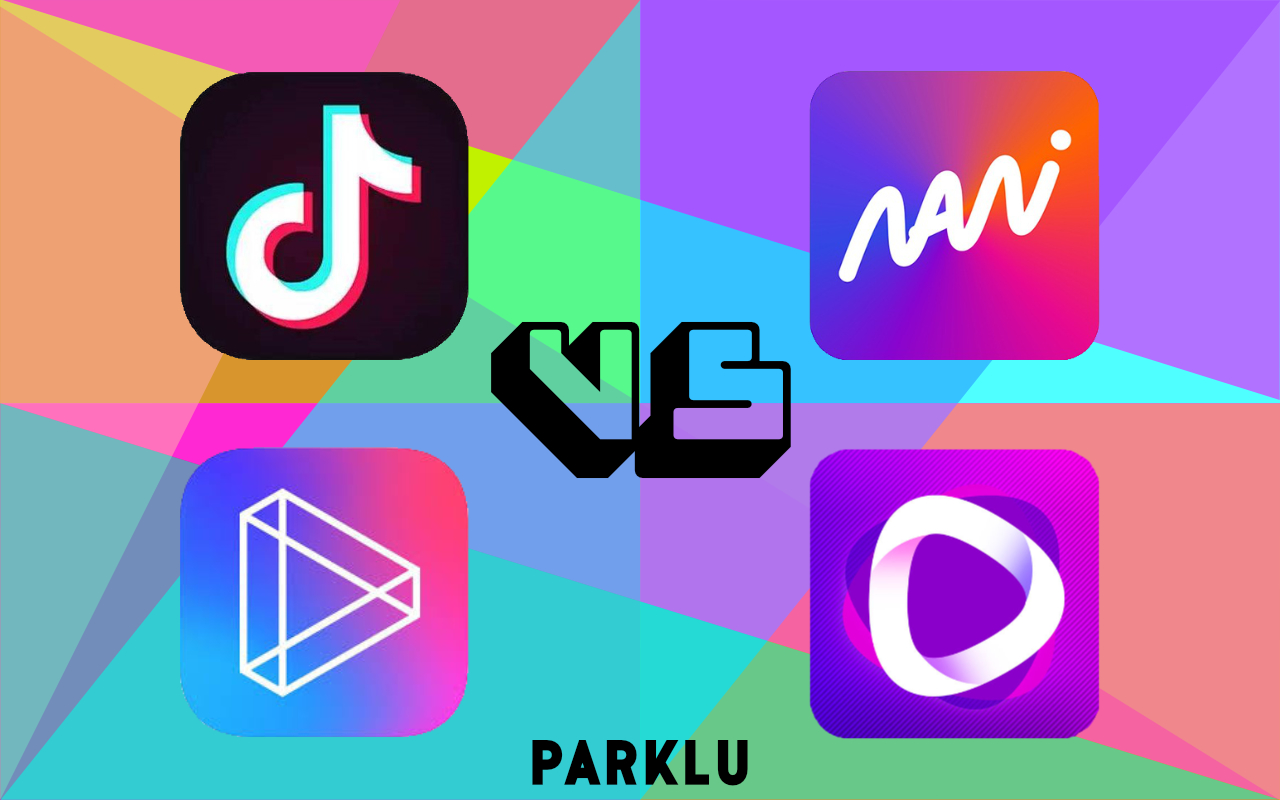It should be obvious to everyone that 2018 marks a major departure from the long-form live-streaming trend that started in 2016. This year has been the year of short videos. In this China short video guide, we will introduce the pros and cons of Douyin, Weishi, Nani, Aidong, and Lu Ke.
Seemingly overnight, platforms filled with entertaining, vertically-shot, 15-30 second user-generated videos have taken over China’s social media industry.
The driver of this trend is Douyin, which hit 150 million daily active users in June. While it was initially the only big player in the world of short videos, China’s top internet companies – including Tencent, Baidu, and Weibo — have been rolling out their own short video apps to challenge Douyin’s dominance.
China’s social media ecosystem is once again being reshuffled. But, before you rush to re-evaluate your China KOL marketing strategy, let’s take a moment to see all these new players and ask ourselves, is short video even worth it for KOL marketing?
The China Short Video Players
Douyin
Media darling Douyin has captured everyone’s attention with its explosive growth, trendy appearance, addictive content, and, now, massive user base. At the end of 2017, marketing on Douyin was still a bargain. Nowadays, both advertising and KOL collaborations command jaw-dropping prices.
Pros:
- An upper-middle-class female user base
- Increasingly high quality of content
- Campaigns by numerous top brand such as Adidas, Audi, Michael Kors, etc.
- Ability to link to Taobao
Cons:
- Very expensive to work with KOLs or run official campaigns
- Rumors of unrest: Early top platform KOLs feel that their reach and engagement have dropped as new content creators flood the platform
- Douyin announced they will be handing over KOL management to several select MCNs and launching its own KOL marketing platform changing a 60% fee. It early to predict the effects.
Weishi
Tencent’s Weishi was actually one of China’s earliest short-video sharing apps, first appearing in app stores in 2013 and peaking in user numbers in early 2014. With the growth of Miaopai, the introduction of video to Weibo, as well as some other factors, the app slowly lost users. Last April, it was even taken offline briefly.
Then, this year, in an effort to compete with Douyin’s social media takeover, Tencent decided to bring Weishi back to life, and in early April announced they would be spending 3 billion RMB ($478 million) in subsidies to entice KOLs to join their community and start producing content for Weishi. However, in June, a scandal erupted when content creators claimed that Tencent was withholding payments.
Pros:
- While some say Weishi won’t be able to catch up to Douyin, they may not have taken into account Tencent’s numerous social platforms and online properties that make it extremely easy to promote and grow Weishi’s user base
- Weishi is still in early stages, meaning it is much cheaper to work with KOLs and run campaigns
Cons:
- A lot of KOLs left Douyin and other apps to join Weishi on false promises from agencies and multi-channel networks (MCNs). The agencies and MCNs aren’t paying up and this has led to a lot of negative press and an exodus of talent
- Weishi looks very similar to Douyin and lacks originality
Nani
Baidu is also attempting to ride the short video wave with their app Nani. Nani was quietly launched in January, but only recently started recruiting KOLs.
Similar to Weishi, Nani is cooperating with agencies and MCNs to draw talent to the platform. However, unlike Weishi, Nani has officially outlined compensation tiers for recruited content creators, to avoid miscommunication and misrepresentation issues.
Pros:
- Baidu is investing heavily in the platform
- Nani might benefit from Weishi’s issues: If talent leaves Weishi for Nani, content quality will decrease, and users might move to Nani
Cons:
- Nani looks very similar to Douyin and lacks originality
- Baidu does not have as much experience in this space as the other players
Aidong
The newest addition to the short video ecosystem is Weibo’s Aidong. In recent months, Weibo has been feeling a significant threat from mega-popular Douyin. In an effort to retain young users, Weibo launched their own stand-alone short video platform Aidong in late June. Though it is a separate platform, Weibo users can integrate their Aidong accounts with their Weibo accounts and share fans and content across the two platforms (similar to Weibo and its live streaming subsidiary Yizhibo). On top of that, Weibo no longer allows users to connect their Weibo accounts to their Douyin accounts.
Pros:
- All top Chinese celebrities and KOLs have Weibo accounts, which will make it easier for Weibo to get top talent posting on its platform. Weibo has already proactively migrated video content from some of their top accounts to Aidong.
- Weibo was late to the live streaming game. Yet, because of their connections to talent and cross-platform integration, they have made their live streaming platform Yizhibo one of the top streaming platforms, especially for brands. There is a strong likelihood the same thing could happen with Aidong
Cons:
- Weibo already owns top video platform Miaopai. It is unclear to many why they decided to start from scratch and create a brand-new platform.
- Aidong looks very similar to Douyin and lacks originality
DuKe is now Lu Ke
*Updated Sep. 20th, 2018
According to Alibaba representatives, the e-commerce giant is also planning on joining the short video trend and should be launching e-commerce-focused short video platform Lu Ke any day now.
Like other platforms, Lu Ke’s videos will also be vertically shot and 15-30 seconds in length. However, unlike the other major players, Lu Ke will focus on lifestyle and product-related content, as opposed to pure entertainment. The platform will be complementary to Alibaba’s live streaming platform, Taobao Live, and their social commerce platform Weitao. Viewers will be able to purchase products directly from the videos.
Alibaba has said that the launch of Lu Ke will have no effect on their current partnership with Douyin and that the more platforms that can link to Taobao, the better.
Pros:
- The integration of social and commerce is a huge trend in China and short video is becoming a major traffic driver for e-commerce in China
- Weitao users are already able to upload videos, so the concept is somewhat proven
- DuKe is original and has its own defined niche, meaning it doesn’t really need to compete with the other short video apps
Cons:
- How much can a KOL communicate about a product in 15-30 seconds?
- It will be a challenge to keep viewers interested, create original content, and avoid coming off as too commercial
From a KOL marketing standpoint, should brands be interested in any of these China short video platforms?
It’s too early to say definitively
Despite the massive growth of Douyin and the fear of missing out, the China short video trend is still in its early stages. Douyin is leading the way and currently holds a huge share of the market, but there is still plenty of room for new platforms to come in and create their own niche.
The problem is that, so far, these new players aren’t doing that. Weishi, Nani, and Aidong all look and feel almost identical to Douyin. No matter how much money these companies pledge to pour into China short video platforms, at the end of the day, content, community, and unique features are what keep users around.
Until these three apps define their unique selling points and have clear user demographics, marketing on China short video platforms might be a shot in the dark. While it is important to be aware of these other apps and keep an eye on their development, for now, it’s probably better to stick with Douyin.
Popular short video creators aren’t necessarily KOLs
No matter which app they choose, brands need to be cautious when it comes to KOL marketing on short video platforms. I don’t want to debate about semantics, however, it’s not clear that we should call the content creators on these platforms “KOLs”.
This is absolutely no judgement about their artistic abilities. Rather, it seems many Douyin users should be labelled as content creators and entertainers, not KOLs. KOLs are people who are seen as thought leaders. They have a dedicated community of followers who trust their opinion and seek their advice.
Much of the content on these platforms is entertaining but provides little-to-no opinion or expertise on a matter. Furthermore, many Douyin influencers have gone from no followers to hundreds of thousands – and, in some cases, millions – in a matter of days. Even the world’s best content won’t allow a KOL to develop a trusting relationship with fans so quickly.
To make matters worse, with all the new platforms offering to pay for content, many of these content creators have been jumping around from platform to platform, going where the money is. They are thinking short-term and creating content with a focus on earning money, not on providing value and sharing their passion with their community.
Short video is a great tool for generating awareness
Even if brands are able to find high-quality KOLs on China short video platforms, they must be aware that short video is primarily going to be useful for generating top-of-the-funnel awareness.
Additionally, due to user demographics and content preferences, China short video platforms may not be suitable for all brands. Experts have shared that the product category with the biggest opportunity to both “go viral” and convert sales on Douyin is food and beverage.
Conclusion
In China’s rapidly changing social media landscape, it is important to stay on top of the latest trends. When done right, short video platforms can be very effective marketing tools. But they are not for everyone. While brands should be willing to pivot and experiment with new platforms, it is important to take be critical and not waste money on something that will not move the needle.















Leave A Comment